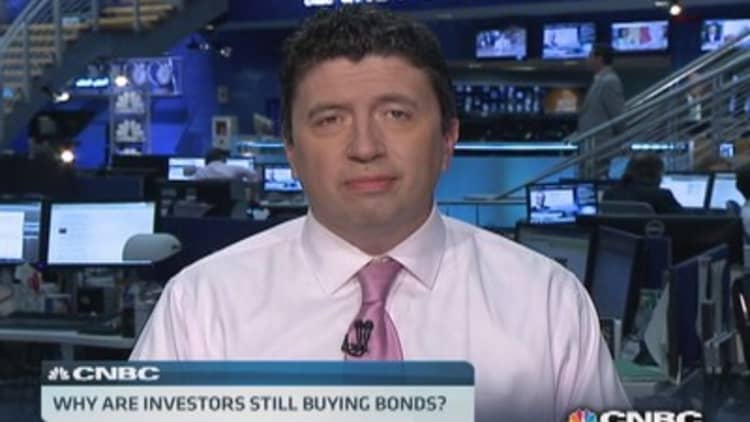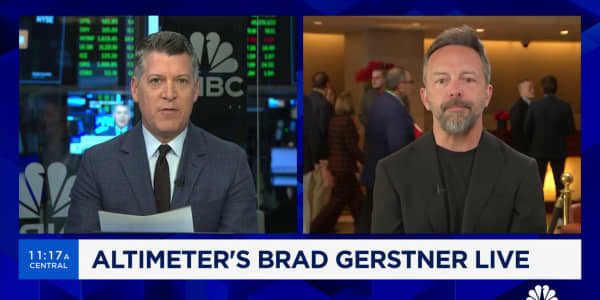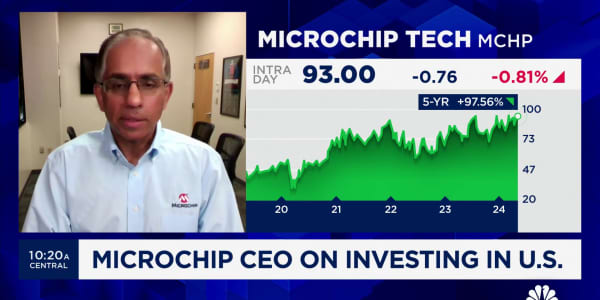
2014 was supposed to be the year the bond market came crumbling down. So was last year. So, probably, will next year.
The anticipation, of course, is that bond-busting inflation is right around the corner and as the Federal Reserve winds down its monthly bond-buying program—quantitative easing—while the economy improves.
Yet despite all the anticipation of money fleeing fixed income and dashing toward equities, bonds continue to get a bid, keeping yields low and confounding those who thought their day was over.
"The market misread the Fed and the economy last year. Investors mistakenly once again assumed that any change from the Fed on the QE side was going to signal imminent rate hikes and a big bear market in bonds," said Robert Tipp, chief investment strategist at Prudential Fixed Income. "That was wrong in 2009 and it was wrong every other time since then up to and including the selloff in 2013."
Indeed, why yields have stayed so low this year has been one of the great market mysteries.
The 10-year Treasury note, used as a benchmark for bond yields in general, has slipped when it was supposed to soar, dropping below 2.5 percent after starting the year around 3 percent. Other yields have remained low as well, with junk-rated bonds fetching barely 5 percent in the marketplace.
Read MoreCorrection coming? Why smart people were dead wrong
Investor money has followed the trend.
For the first time since November 2012, bond funds saw inflows in May ($28 billion globally) while stock-based funds lost $3 billion—a sliver of total assets but a decline nonetheless in a year that has seen equities pull in nearly $78 billion, according to Citigroup.
There are multiple explanations offered up for the investor interest in bonds: short-covering of big end-of-year bets against bonds, economic growth that has fallen short of expectations, belief that Fed tightening will be less aggressive than anticipated, bond-buying from China's central bank, a flight safety amid scary geopolitical headlines, and basic portfolio rebalancing after 2013's outsized stock market gains.
Tipp believes there's one that doesn't get enough consideration: simple value.
"From a global fixed income investor's standpoint, there are a lot of attractive opportunities out there," he said. "Obviously things are nowhere near as cheap as they were at a number of points in time looking back over the last half-dozen years. Nonetheless, going forward in the low-rate environment you're probably likely to continue to see outperformance from high-yield and long-term investment-grade corporates."
Read MoreEverything the Fed thinks it knows may be wrong
Tipp also believes there are opportunities in municipal bonds, collateralized mortgage-backed securities and some emerging market debt.
To be sure, though, there remain skeptics who believe the market is misinterpreting the direction of rates.
Inflation indicators have risen lately, for instance, and some of the factors influencing the drop in yields are likely to wither as the year goes on.
Read MoreDeflation 'greatest hoax' as prices keep rising
"The May rally in Treasurys has been different from the January rally," Bank of America Merrill Lynch strategists Priya Misra and Shyam S. Rajan said in a note to clients. "It has been accompanied by higher (Treasury Inflation-Protected Securities) breakevens, a steeper curve and higher risk assets. This is consistent with pricing in of more dovish monetary policy; however, there has been little from the Fed that would justify this stance. Expectations of (European Central Bank) easing may be part of the story but that should not be sustained for long."
Jim Paulsen, chief market strategist at Wells Capital Management, predicts the 10-year yield is on its way above 3 percent by the end of year—the kind of move that could clobber bond market traders counting on lower rates and higher prices.
"It's kind of weird when you see inflation indicators going up," he said. "I don't see a lot of people thinking yields are going to go down from here. Yet that bugs me, because maybe the market will teach us all a lesson."
—By CNBC's Jeff Cox.






